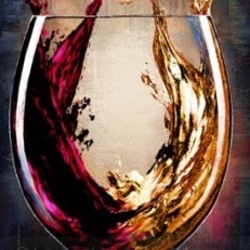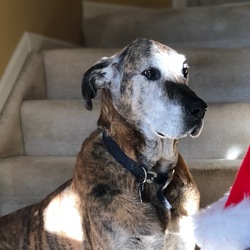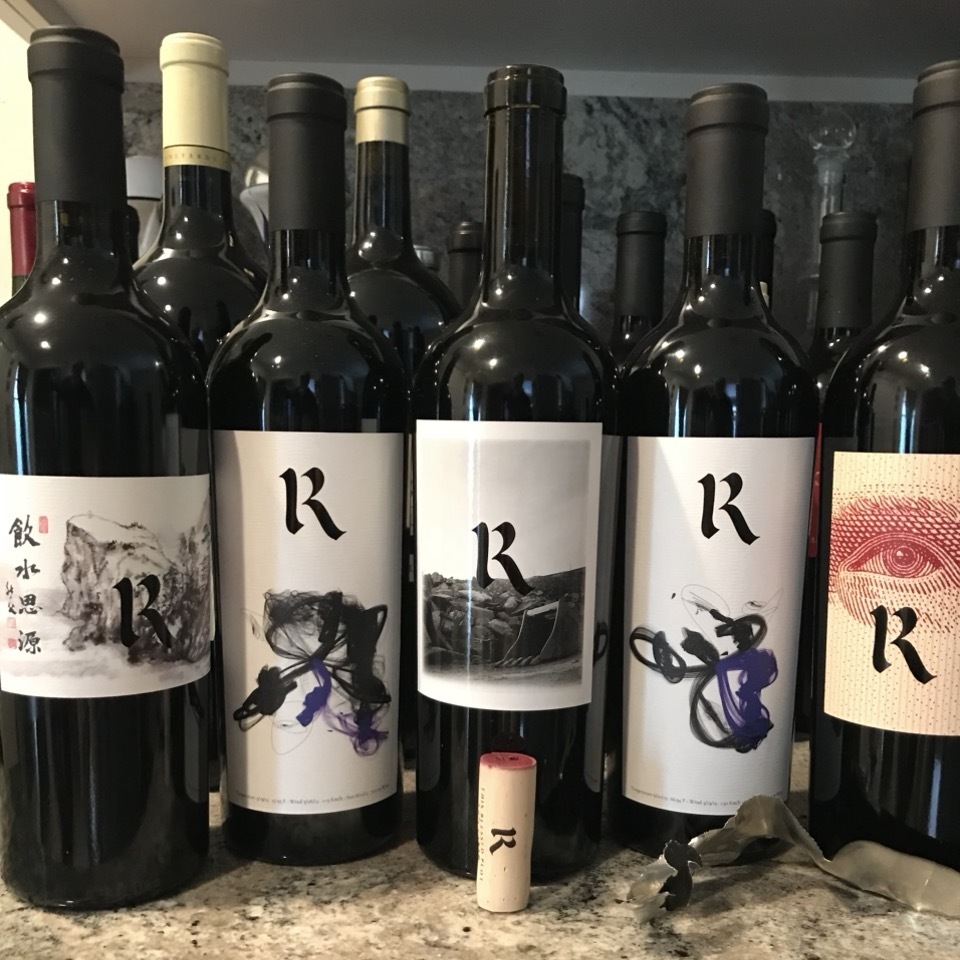Sylvie Levieux
Domaine Sylvie Spielmann
Gypse Terroir Unique Alsace Pinot Blanc Blend
Love it. Complex and fragrant. Absolutely delightful — 6 years ago
Joel et Sylvie Cirotte
Sancerre Sauvignon Blanc 2016
Floral, aromatic. Acid doesn’t dominate the attack. Steely. Citrus, green apple. Solid length. — 8 years ago
Château Pichon Longueville Comtesse de Lalande
Pauillac Red Bordeaux Blend 2005
Pichon Lalande is my favorite 2nd growth with a steak. Yup...it's #SteakandClaret night to quote my buddy Gary Westby. Further, it's certainly one of my favorite producers period. I've waited for this wine to be in the bottle for 10 years before finding out definitely how good it was or wasn't. You see, the 05 Bordeaux vintage was exceptional. It's drinking right now better than 00. 00 may turn out to be better, but not for some time. The real issue was the division of scores between RP & NM. Parker had this as low as an 86 and now has it at 89. Neil Martin has been consistently at 95-96. I found it simply inexplicable that Pichon Lalande could have bombed in such a great vintage. Tonight, I know they didn't. This wine is beautiful. Although, I don't believe it will cellar as long as their some of their very best vintages and many others I've enjoyed. On the nose, bramble, ripe blackberries, dark cherries, notes of blueberries, poached strawberries, graphite, baking spices, cedar, lightly perfumed violets and dark, fresh & dry red flowers. The body is medium-medium plus, tannins nicely resolved with 10 years to be completely resolved. Fruits of; ripe blackberries, dark cherries, notes of blueberries, poached strawberries and pomegranate with a whiff of spice. There's notes of dry bramble, soft leather, fresh violets, graphite, cedar, dry stones, dark rich earth, limestone, tobacco, spice-box, vanilla, very light cinnamon & nutmeg. The finish is very long, elegant, ripe, round, smooth, good acidity and beautifully elegant...50-50 earth & fruit. I bought more bottles of this at $85 after it's was first released in futures and I do not regret it. $85 is proving to be a steal for this wine when it normally sells for between $100-$150 a bottle and higher. Might heavy up further after tonight if I find more around the same price. Oh yes...I'm with NM on the scoring. Photos of the Chateau, estate vines, newer tasting room & the Virginie de Pichon-Longueville, Comtesse de Lalande. Forgive my long post, but my passion and love for this producer is profound. Producer history and notes...as I wrote in an earlier post for Pichon Baron, Pichon Baron and Lalande started as one entity. The first mention of what is now called Chateau Pichon Lalande was the creation of Pierre de Mazure de Rauzan. Pierre de Mazure de Rauzan is responsible for forming many of the top Bordeaux estates today. Pichon Lalande was given its name when Therse, the daughter of the founder received the estate as a dowry when she married Jacques de Pichon Longueville. Pichon Lalande was essentially managed by three women, Therese de Rauzan, Germaine de Lajus and Marie Branda de Terrefort. On the eve of his death in 1850, Baron Joseph de Pichon Longueville divided the property between his five children. His three daughters received Pichon Lalande and his sons Pichon Baron. What happened next was Virginie, the wife of the Count of Lalande took over the management of the estate under the name of Comtesse de Lalande. In 1850 she commissioned the popular, architect Duphot to build a residence inspired by the Hotel de Lalande, located in Bordeaux. Without heirs, Pichon Lalande passed down from aunts to nieces. Following World War I, the Miailhe brothers, bought Pichon Lalande in 1925. They were the ones who planted even more Merlot. May-Eliane de Lencquesaing, the daughter of Edouard Miailhe became the new owner and general manager of Chateau Pichon Lalande in 1978. She expand the size of Chateau Pichon Lalande from 40 hectares to it's current 89 hectares. Chateau Pichon Lalande remained in the same family for more than 250 years! In fact, over three centuries, only two families have owned Pichon Lalande. May-Eliane de Lencquesaing sold Pichon Lalande to the owners of Roederer Champagnein in January 2007. This family-run company is managed by Frederic Rouzaud who owned several other wine estates in Bordeaux; Chateau Bernadotte, Chateau de Pez, Haut Beausejour and Chateau Reaut la Graviere. He sold Chateau Bernadotte in December 2012. In February, 2011, Sylvie Cazes was named the director of Chateau Pichon Lalande. She replaced Gildas d’Ollone. Sylvie Cazes was replaced in 2012 by current Director Nicolas Glumineau, who was previously at Chateau Montrose. In 2012, Pichon Lalande renovated the estate with a budget estimated at over 15 Million Euros. The new facilities included; building of a new underground barrel aging cellar and several new buildings...one that houses their new tasting room as shown. This renovation provided numerous improvements in their wine making. Most importantly, in the vinification. They created a new, triple tiered, cellar where everything moves by gravity. They also added numerous new, stainless steel, temperature controlled, double skinned vats. These new vats allow Pichon Lalande to vinify on a parcel by parcel basis as well as get much softer & gentle extractions. The 89 hectare vineyard of Chateau Pichon Lalande is located adjacent to Chateau Latour and and across the road from Pichon Baron. The terroir of Chateau Pichon Lalande is deep gravel with clay and limestone soil and is planted to; 61% Cabernet Sauvignon, 32% Merlot, 4% Cabernet Franc and 3% Petit Verdot. — 8 years ago

Le Clos du Caillou / Domaine du Caillou
Cuvée Unique Vieilles Vignes Côtes du Rhône Red Rhone Blend 2011
This is an insiders wine. You have study, focus and taste a lot wine to know how special this wine can drink. Especially, at its QPR.
There are a lot of people that covet SQN, Caycuse, Horsepower and No Girls. For my palate, these wines either burn the palate with ABV or choke off the fruit with way too much bacon fat and or deeply marinaded grilled meats. Yes, you are drinking expensive, flashy producers but, I would humbly disagree they are better wines than this 2011 Le Clos Du Caillou Vielles Vignes Cuvée Unique. Those other wines should aspire to be everything this 2011 shows and delivers.
This Le Clos Du Caillou has the balance the above wines lack and at a fraction of the price point. I would drink this 2011 over any of the other fore mentioned wines. While this Le Clos Du Caillou is a shade hot, it is not nearly as hot as SQN etc.. Hot ABV alcohol that burns the palate & back of the throat will forever be a fatal flaw in a wine.
The nose reveals, ripe; blackberries, dark cherries, blue & purple fruit mix, poached & back strawberries, black raspberries and both plums. Dark, sweet tarriness, dry, crushed rocks, steeped teas, anise stretching to black licorice, hint of dry herbs with bay leaf leading the way, dry brush, black, dry earth, savory, grilled meats, medium, dark spice, understated baking spices; clove, nutmeg, vanilla and a touch of clove, dark & mid red fruit cola, just a whiff of incense with candied, fresh and withering red & dark florals.
The body is rich and mid full. Tannins just 50% resolved with round, dark tarry teethiness. The structure, tension, length and balance are harmonious...just before their peak. Ripe; blackberries, dark cherries, blue & purple fruit mix, raspberries that haut the center palate on the long set, poached & back strawberries, black raspberries and both plums. Dark, sweet tarriness, dry, crushed rocks, limestone minerals, steeped teas, anise stretching to black licorice, hint of dry herbs with bay leaf leading the way, dry brush, dry black earth, dry stone wrapped in moist clay, savory, grilled meats, some bacon fat, medium, dark spice, understated baking spices; clove, nutmeg, vanilla and a touch of clove, Mix of caramel & mocha powder, dark & mid red fruit cola, just a whiff of incense with candied, fresh and withering red & dark florals. The acidity is phenomenal. The long, ripe, well balanced & textured, elegant finish is memorable and is persistent for several minutes.
Wine paired perfectly with our marinated Tri-tip.
If you are over paying for the above lesser wines mentioned above, you owe it to yourself to seek out and cellar this wine appropriately.
Photos of; Le Clos Du. Caillou, their barrel room, Owners-Sylvie Vacheron & Bruno Gaspard and one of their vineyards. It’s amazing they can grow anything in that stone soil structure.
— 6 years ago

Bollinger
Brut Rosé Champagne Blend
On the nose; bright cherries, ripe strawberry & cranberry reduction, black raspberries, raspberries, watermelon near the rhine, mixed orange citrus, oyster shells, baguette crust, understated volcanic minerals, chalk, saline, fresh pink roses and florals. The body is full and a shade gluey. The fruits are ripe, rich and candied/gummy in style. Bright cherries, black cherries ripe strawberry & cranberry reduction, black raspberries, raspberries, watermelon near the rhine, mixed orange citrus spray, saline, seashells, soft grey volcanic minerals, lots of grippy powdery razor sharp chalkiness, baguette crust, fresh pink roses & florals, acidity that is round and well done, understated delicate micro bubbles and a long, well balanced, rich finish. The reason why I prefer the Billecart Salmon, Ruinart & Laurent Perrier over the Bollinger is it’s a little too sweet for me. Photos of; the House of Bollinger, cellar, headstone that marks one of their vineyards and their harvest staff picking perfectly manicured rows. Producer notes and history...Bollinger has roots dating back to 1585 when the Hennequins, one of the Bollinger founding families, owned land in Cramant. Before the Bollinger house was founded in the 18th century, the Villermont family practised wine making, though not under their family name. In 1750, Villermont settled at 16 rue Jules Lobet, which would eventually become the head office for Bollinger. In 1803 Jacques Joseph Placide Bollinger was born in Ellwangen, in the kingdom of Württemberg. In 1822, he moved to Champagne and found work at the house of Muller Ruinart, which no longer exists. Many other Germans came to settle in the Champagne region, including Johann-Josef Krug and the Heidsiecks, who founded a house that would become; Charles Heidsieck, Piper Heidsieck, Veuve Clicquot and others. The Champagne house Renaudin Bollinger was founded in 1829 in Aÿ by Hennequin de Villermont, Paul Levieux Renaudin and Jacques Bollinger. The partners agreed that the Villermont name would not be used on the labels, hence the house name Renaudin Bollinger. Starting when Jacques Bollinger married Charlotte de Villermont, the house has been managed by the Bollinger family. Even though Paul Renaudin passed without an heir to his name, the label did not become solely Bollinger until the 1960s. Founder Jacques Joseph Bollinger married Charlotte de Villermont. The had a daughter, who had two sons Joseph and Georges. These sons took over the company in 1885 and began expanding the family estate by purchasing vineyards in nearby villages. The sons also developed the image of the brand, such as when Bollinger became the official supplier to the British court and received a Royal Warrant in 1884 from Queen Victoria. In 1918, Jacques Bollinger, the son of Georges, took over the company and married Emily Law de Lauriston Boubers, known as "Lily". Jacques expanded the facilities by building new cellars, purchasing the Tauxières vineyards, and acquiring the assets of another Champagne house on Boulevard du Maréchal de Lattre de Tassign, where Bollinger's offices are presently located. When Jacques Bollinger died in 1941, Lily Bollinger took over. Lilly expanded production with the purchase of even more vineyards, but is best known for traveling the world to market the brand. Bollinger was modernized under the Claude d'Hautefeuille, who acquired additional vineyards and further developed the brand internationally. Following Claude, his cousin Christian Bizot took over the Bollinger house and expanded world distribution. Their Winemaker also used several James Bond film movies to market the brand. Bollinger is fermented in oak barrels. At harvest, only the first pressing is used in the cuvée, unless the vintage is of particularly high quality, when a second pressing of Chardonnay will be used. Bollinger sells the second pressing, the tailles. Bollinger utilizes two pressing houses (Louvois and Mareuil sur Aÿ) to ensure a short distance between harvest location and pressing. When possible, grapes purchased from growers are pressed by the house. When the pressed wine arrives, the Bollinger cellar master analyzes the musts for quality, discarding and selling off those that do not meet the house standards. The first fermentation is done cru by cru, variety by variety, preserving many of the unique characteristics of the vines location. Bollinger is one of the few Champagne houses to do some first fermentation in oak barrels. Wines that will not hold up to first fermentation in wood are vinified in vats. Bollinger Champagnes usually undergo malolactic fermentation. The Grande Année 1995 did not undergo malolactic fermentation. Bollinger uses only traditional yeast. They’ve decided that new generations of yeasts (agglomerated yeasts and encapsulated yeasts) do not produce satisfactory Champagne. Vintage wine, including all wine to be used in a Grande Année, is fermented in small oak barrels, sorted according to origin and variety. Both oak and stainless steel are used for non-vintage wine. Bollinger also has the last Cooperage in Champagne. The oak barrels are all at least four years old, avoiding the transfer of tannins to the wine. The wines are only lightly filtered. All Bollinger Champagne spends a long time on its lees, contributing to the complex flavour of the wine. Though appellation d'origine contrôlée rules only require 12 months on lees for non-vintage Champagne and for vintage (NV wines, 15 months from tirage to release and vintage wines must be kept for 36 months from tirage to release), Bollinger ages their non-vintage wines three years, and the vintage wines from five to eight years. The Grande Année and R.D. Champagnes are riddled by hand. At disgorgement, Bollinger wines are given a low dosage, to maintain the balance and flavor of the wine. The company uses 6-9 grams of sugar per liter for the Special Cuvée and La Grande Année. The extra-brut R.D. is dosed between 4 and 5 grams. After dosage, the wines are aged an additional several months, resting for a minimum of three months before shipping. Bollinger owns nearly 160 hectares of vines, producing more than 60% of its supply. The vines are largely Pinot Noir, specifically clone 386. Bollinger believes this clone ensures good quality as well as highlighting characteristics of the various terroirs. The vineyards also include some rare ungrafted French vines from before the phylloxera. Bollinger owns vines all over Champagne, including the crus of Aÿ, Bouzy and Verzenay. — 8 years ago

I figured a real keyboard needed to be involved, thanks for the insight.

Sylvie Paulhiac-Delalot
Tradition Brut Champagne
Balanced, delicious and expressive. — 9 years ago
Sylvie Augereau
Réjouissances Pineau d'Aunis Grolleau 2016
Lil funk and everything else is in balance. Great bottle. — 6 years ago
Sylvie Esmonin (Michel et Fille)
Bourgogne Chardonnay 2015
Couleur jaune claire
Nez frais et vanillée raisin mûr
Bouche fraîche et ample à la fois finale sur des notes florales et d épices
— 6 years ago
Domaine Sylvie Spielmann
Envol Vin d'Alsace White Blend 2010
Very nice Alsatian white blend. Energetic with great acidity, mouth-filling intensity, and a long finish. Delicious and refreshing. — 8 years ago
Sylvie Esmonin (Michel et Fille)
Cuvée Vieilles Vignes Gevrey-Chambertin Pinot Noir
Sylvia Esmonin's 06 Gevry Chambertin- young as ever, tannins softened, but the wine itself doesn't show many signs of age. Bold dark boysenberry or Marionberry is indicative of her late picks that have somewhat of a cola type finish. — 8 years ago
Nadine Saxer
Sylvie Riesling Sylvaner
Switzerland with its hidden gems of wines. It's about the simple complexity these wines bring joy to a local meal. — 8 years ago
Sylvie et Vincent Joussier
Domaine de l'Évêché Les Murgers Mercurey Pinot Noir 2013
Always a pleasure. — 9 years ago
Sylvie et Vincent Joussier
Domaine de l'Évêché Les Ormeaux Mercurey Pinot Noir 2014
Tea, berries, a little cocoa, good tannins. Liked it a little more than the 2013. From Shawn's. — 9 years ago
Sylvie Esmonin (Michel et Fille)
Clos St. Jacques Gevrey-Chambertin Pinot Noir 2013
Sylvie & Charles Faisant
Mas Seguala Côtes du Roussillon Villages Syrah Blend 2013
Light wine. Enjoyable if you are not a fan of dense red wine. — 10 years ago













Fredybeans
Robe rubis foncée
Nez épicé léger boisé pointe animale de réduction
Bouche fraîche de petits rouge finale délicate tonique aux tanins fins
Très bien pour le millesime
— 6 years ago